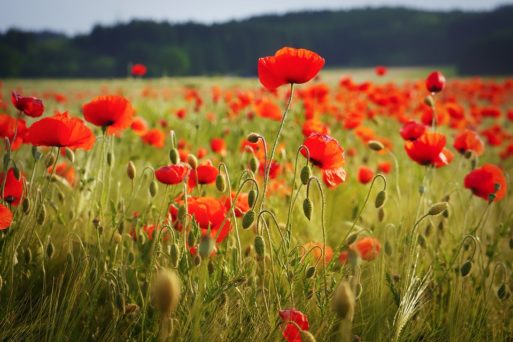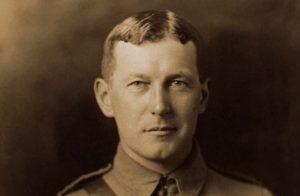
“In Flanders Fields” by John McCrae was inspired by World War I, which was known sadly and incorrectly as the war to end all wars.
On June 28, 1914, Archduke Franz Ferdinand of the Austro-Hungarian Empire was assassinated while touring in Sarajevo. The Austro-Hungarian government blamed Serbia, and on July 28, 1914, World War I officially began.
By early August, Great Britain had declared war on Germany and France had declared war on Austria-Hungary. The United States, for the time being, decided to remain neutral.
The fighting was brutal. Men took refuge in foxholes and trenches only yards away from each other. In addition to rifles and cannons, soldiers often fought hand-to-hand. The number of deaths and the brutal manner in which the men were slain were horrifying.
On May 2, 1915, a Canadian artillery officer, Lieutenant Alexis Helmer, died in the Second Battle of Ypres when a German artillery shell exploded close to him. John McCrae, the brigade doctor and a close friend of Helmer, was asked to conduct the burial service. After the service, McCrae began to work on the poem that would become “In Flanders Fields.”
The poem begins with a juxtaposition between the hard white crosses that marked the burial sites and the warm, swaying poppies that brought rest and sleep. He also wrote of the larks flying overhead, their beautiful voices scarcely audible over the explosions and the sounds of gunfire.
Then McCrae gives voice to those who lie beneath the white crosses:
“We are the Dead. Short days ago
We lived, felt dawn, saw sunset glow,
Loved and were loved, and now we lie
In Flanders fields.”

John McCrae
Credit: poetryfoundation.org
The last stanza exhorts friends to “take up the quarrel with the foe.” Warm hands take weapons of war from cold, dead fingers. Finally, McCrae ends with a warning. If we don’t defeat the enemy, the dead will lie awake and restless in spite of the soothing poppies that grow above them.
“In Flanders Fields” is one of the most famous poems to come out of World War I. It is also the first to mention poppies in conjunction with fallen soldiers.
A Tradition is Born
Later, American teacher Moina Bell Michael was so moved by McCrae’s poem that she wrote her own poem in response to “In Flanders Fields.” She also encouraged others to give poppies to honor veterans of the war.
In 1922, the Veterans of Foreign Wars adopted the poppy as the official memorial flower of the VFW. In 1923, the VFW began a program to let disabled and needy veterans make artificial poppies so they could earn a little money and present recognition to their brothers and sisters in service.
It has been just over a century since John McCrae wrote about beautiful red poppies and stark white crosses. He would probably be surprised to learn that what started as a simple tribute to a dead friend has turned into a national symbol to honor soldiers of every war.

 “In Flanders Fields” by John McCrae
“In Flanders Fields” by John McCrae


 John Mulaney’s “Funeral Planning” on Netflix: No Real Plan
John Mulaney’s “Funeral Planning” on Netflix: No Real Plan

 Composting Bodies Is Now Legal in a Dozen States
Composting Bodies Is Now Legal in a Dozen States














